Why you can trust Tom's Hardware
Nvidia GeForce RTX 5080 Founders Edition
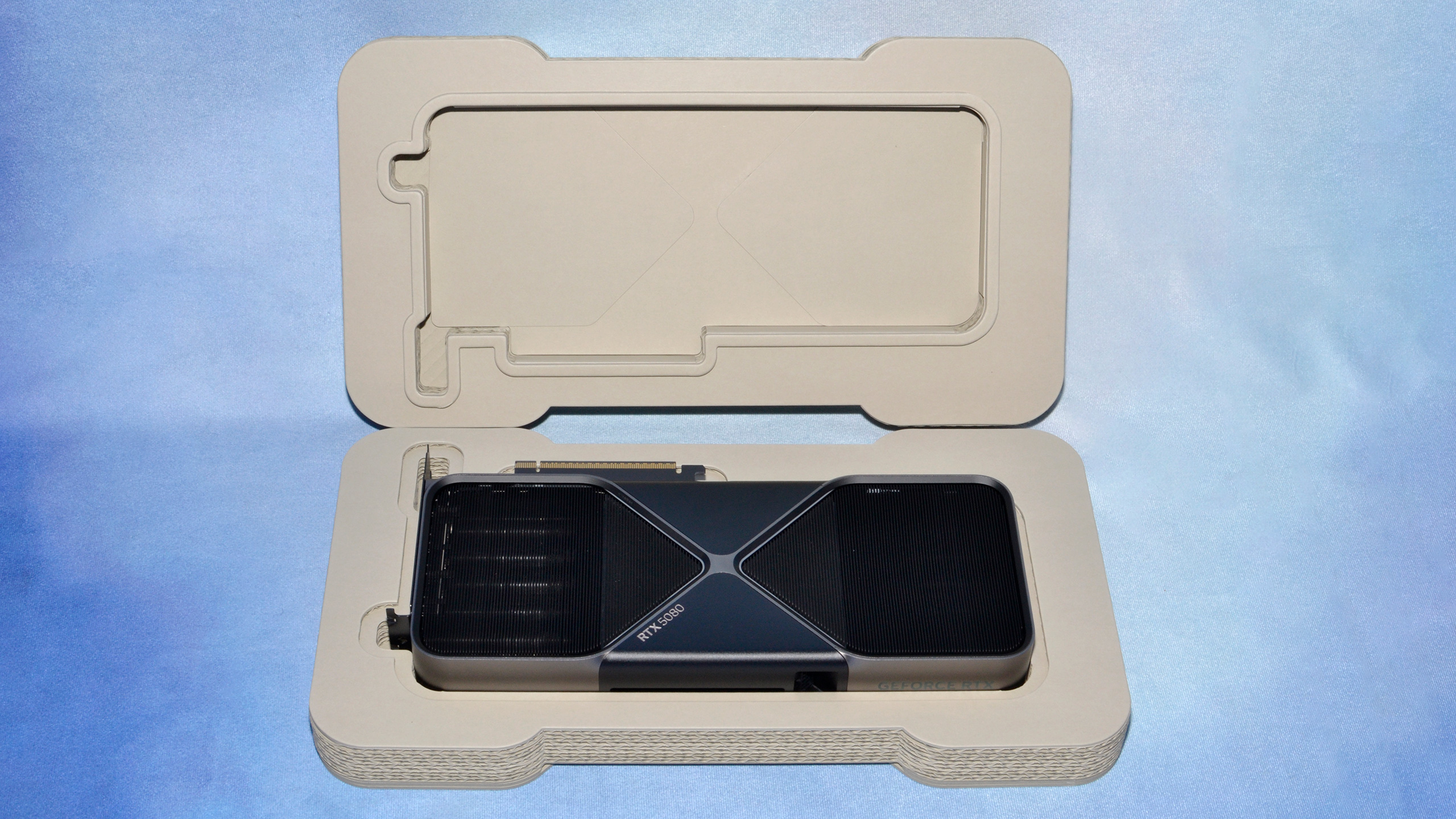
For this review, Nvidia provided us with its RTX 5080 Founders Edition, the reference model that will sell for $999 MSRP — while supplies last. We've already seen the cards at CES 2025, and from the outside, the RTX 5080 looks effectively the same as the RTX 5090. Under the hood, there are differences — in the PCB, GPU, memory, VRMs, etc. — but the cooler is otherwise the same.
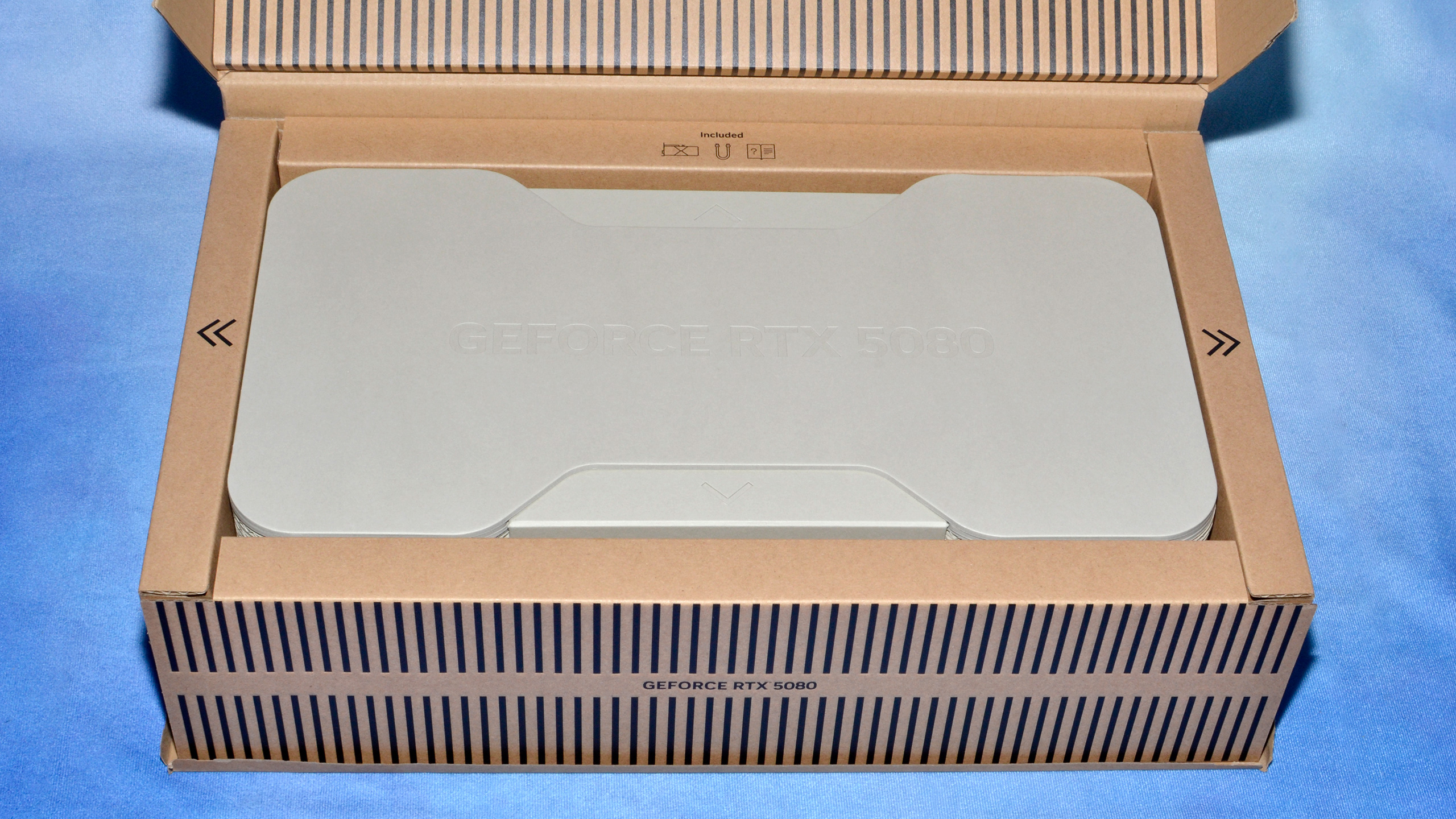
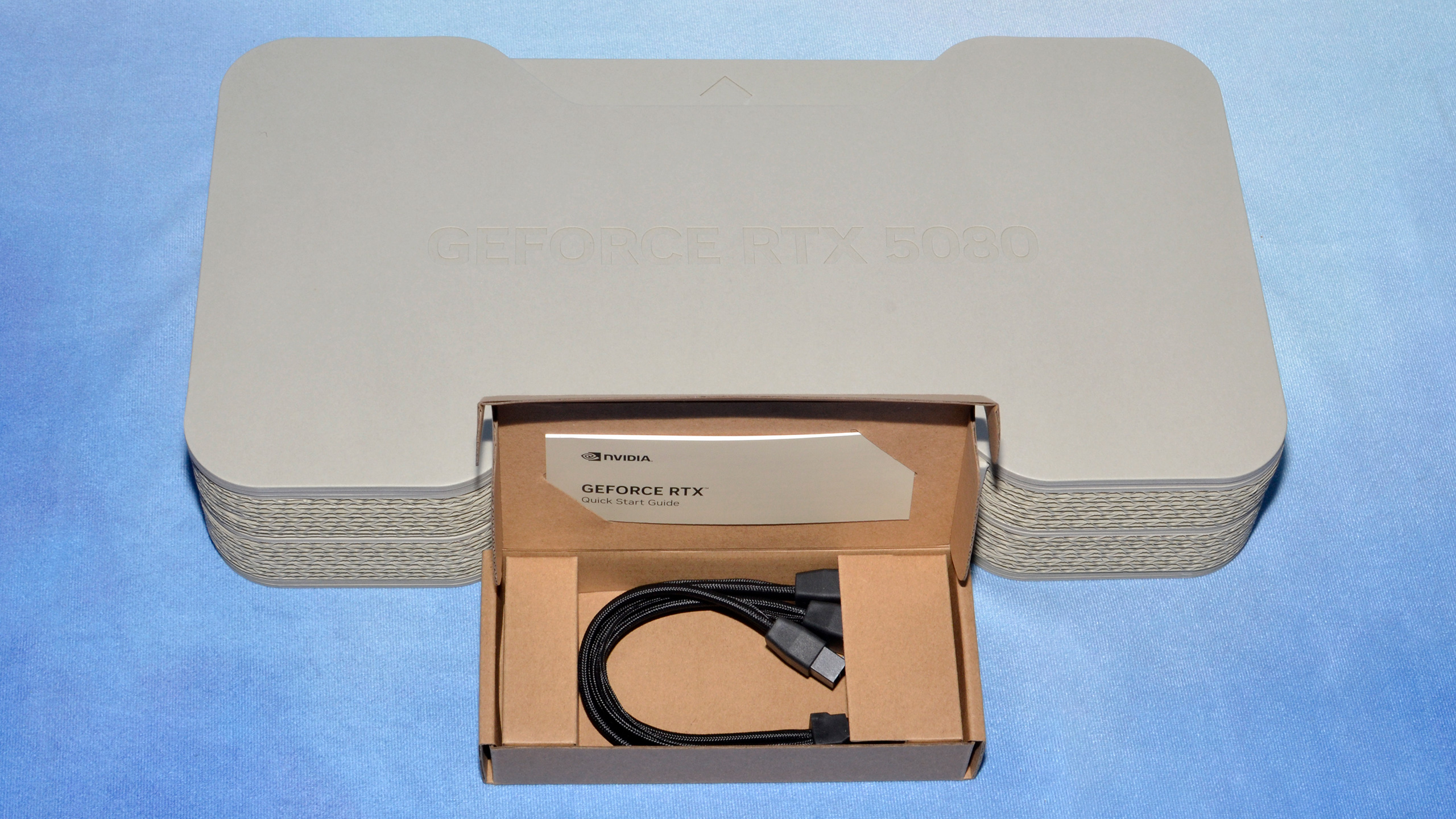
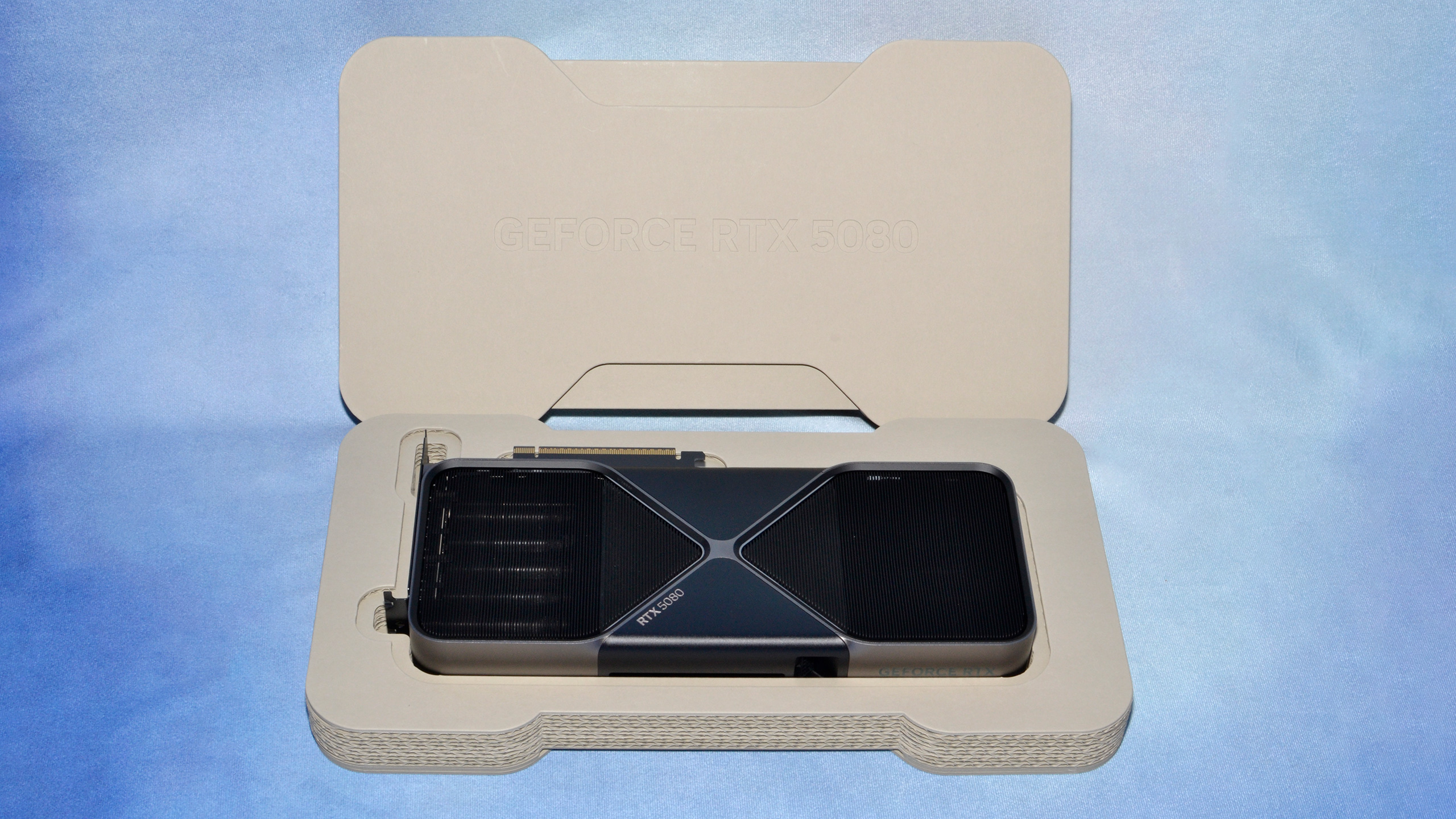

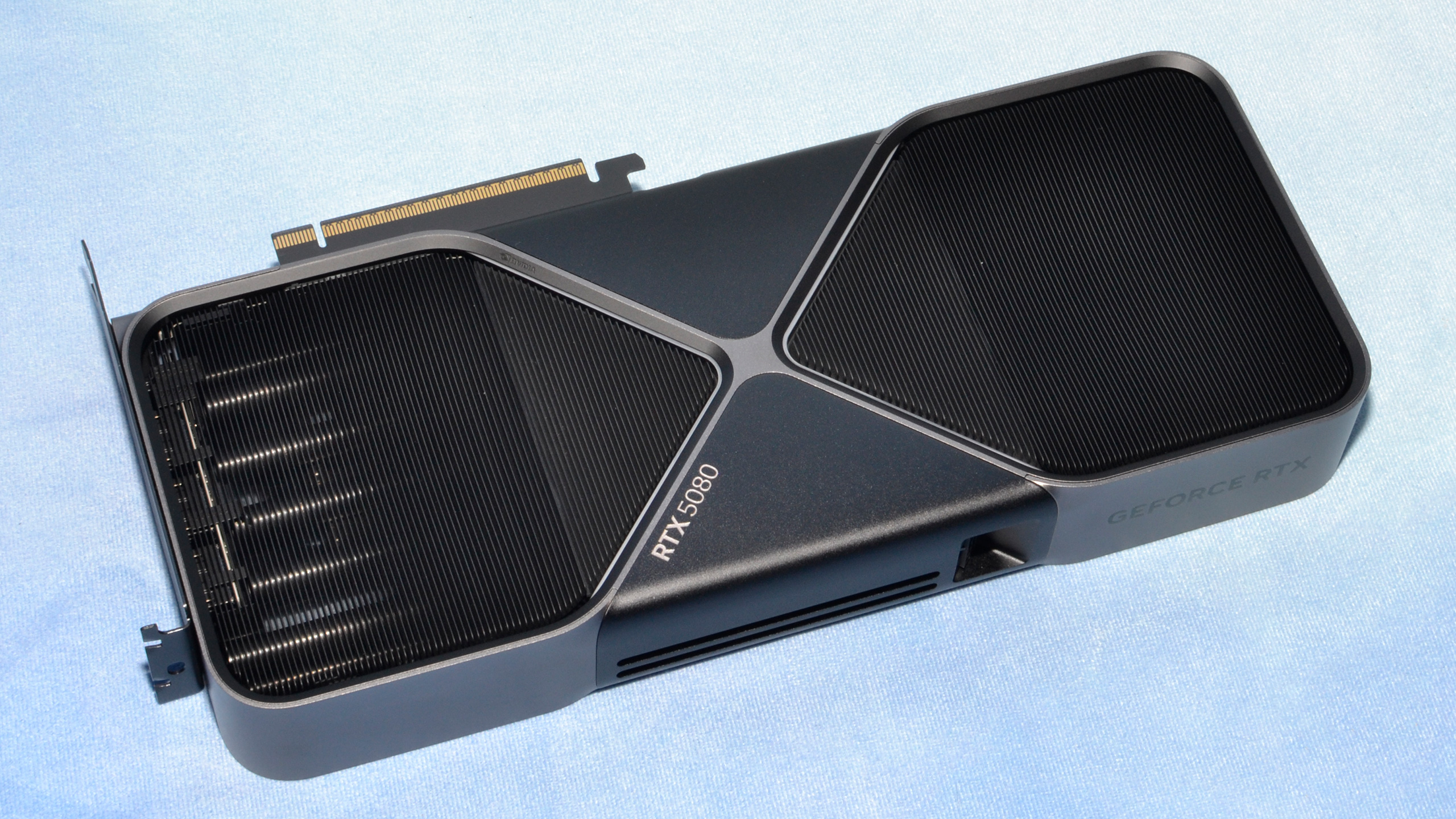
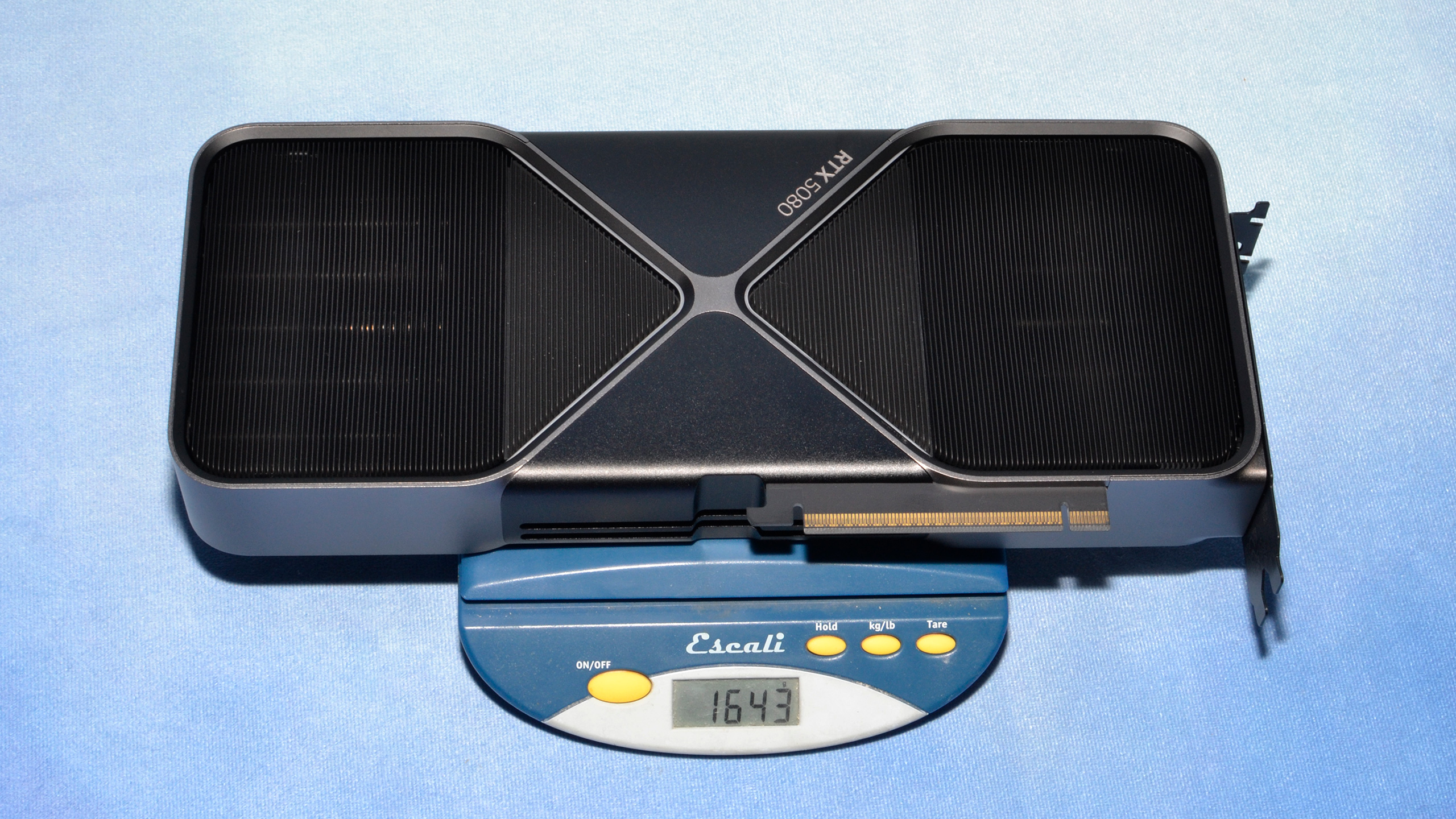
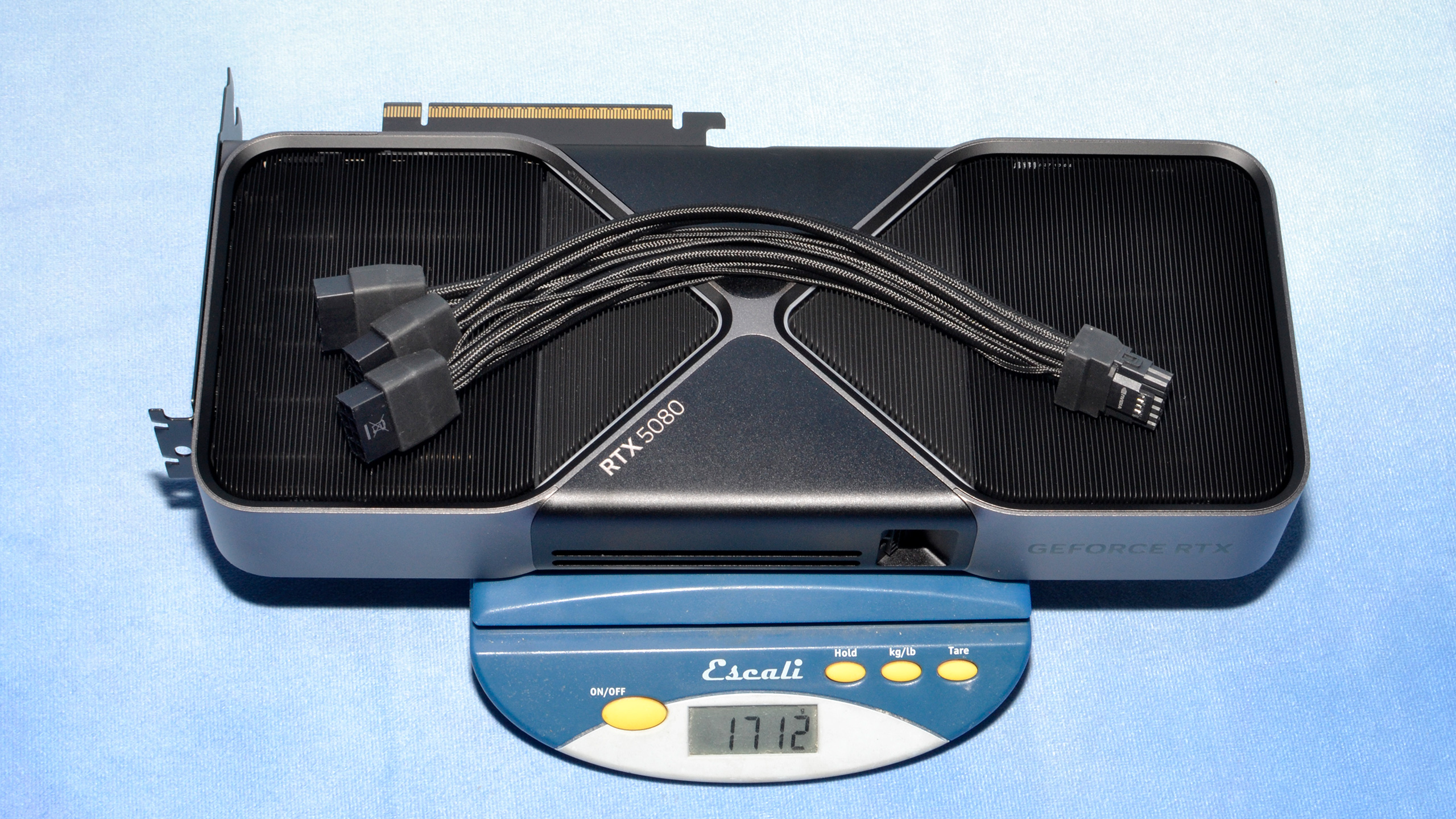
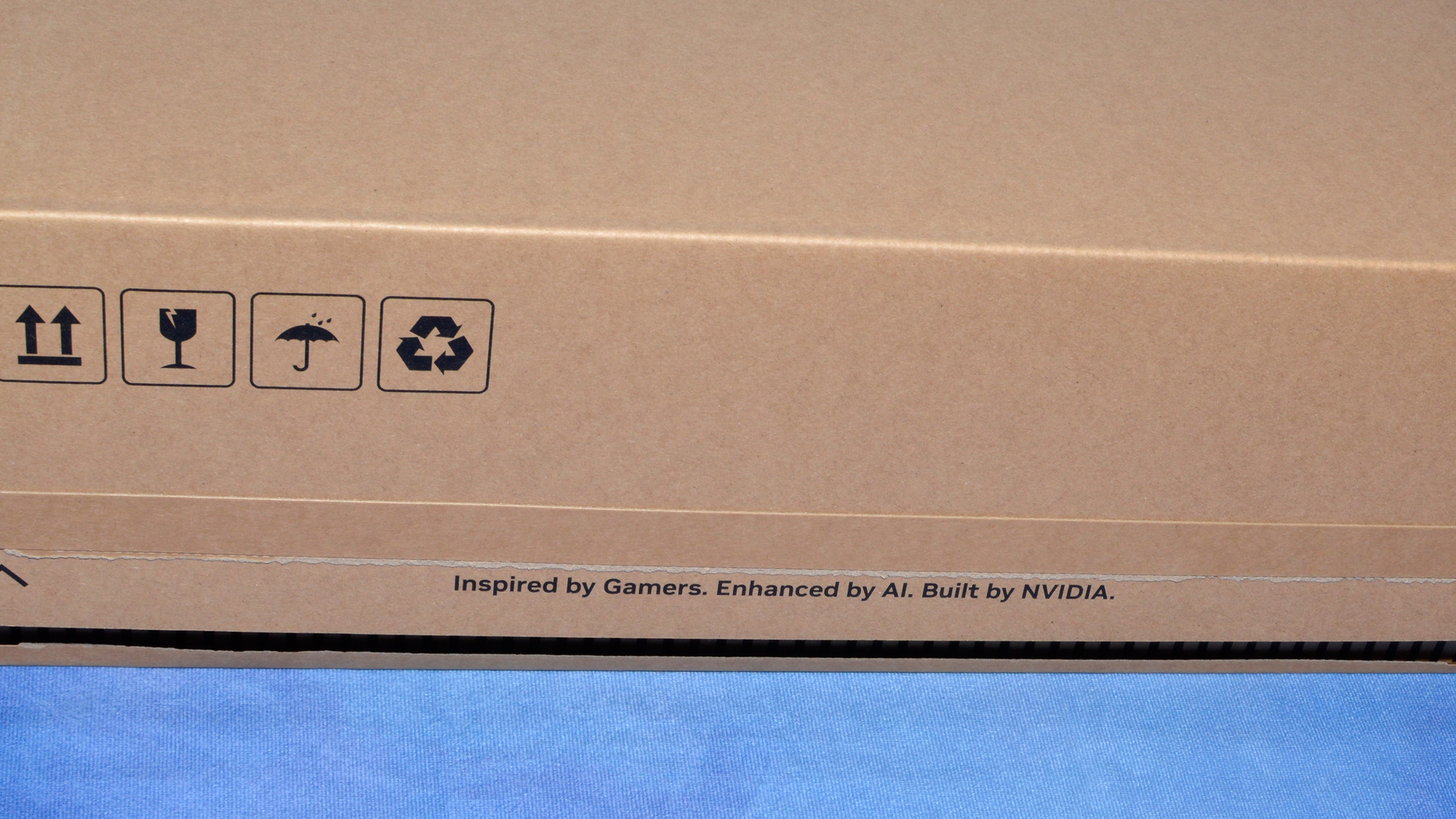
It's unclear if the new packaging we've seen with the 5090 Founders Edition and now the 5080 Founders Edition will be for all buyers or if it's a special design being sent to reviewers and influencers. We assume it's for everyone, and Nvidia uses environmentally friendly packaging, with no inks or plastics and a box made of recycled paper fibers.
The 5080 Founders Edition card weighs 1643g, about 180g less than the 5090's 1826g. Some of that weight goes to the additional GDDR7 chips, VRMs, and the larger GPU die. The 5090 FE also uses liquid metal and likely has some other upgrades to help it cope with up to 215W more power and heat than the 5080 FE. But weight notwithstanding, the card measures the same 304x137x40 mm — which is also the same dimensions as the prior generation 4080 and 4080 Super, except those (and the 4090) were triple-slot cards that were 61mm thick.
Aesthetically, the 5090 and 5080 FE cards also look the same, with a dark gray and black design and silver accents. There's an angled 16-pin 12V-2x6 connector on top, and Nvidia provides a triple-8-pin to 16-pin adapter with the 5080. As with the 5090 adapter, the cables are individually sheathed and far more flexible this time.
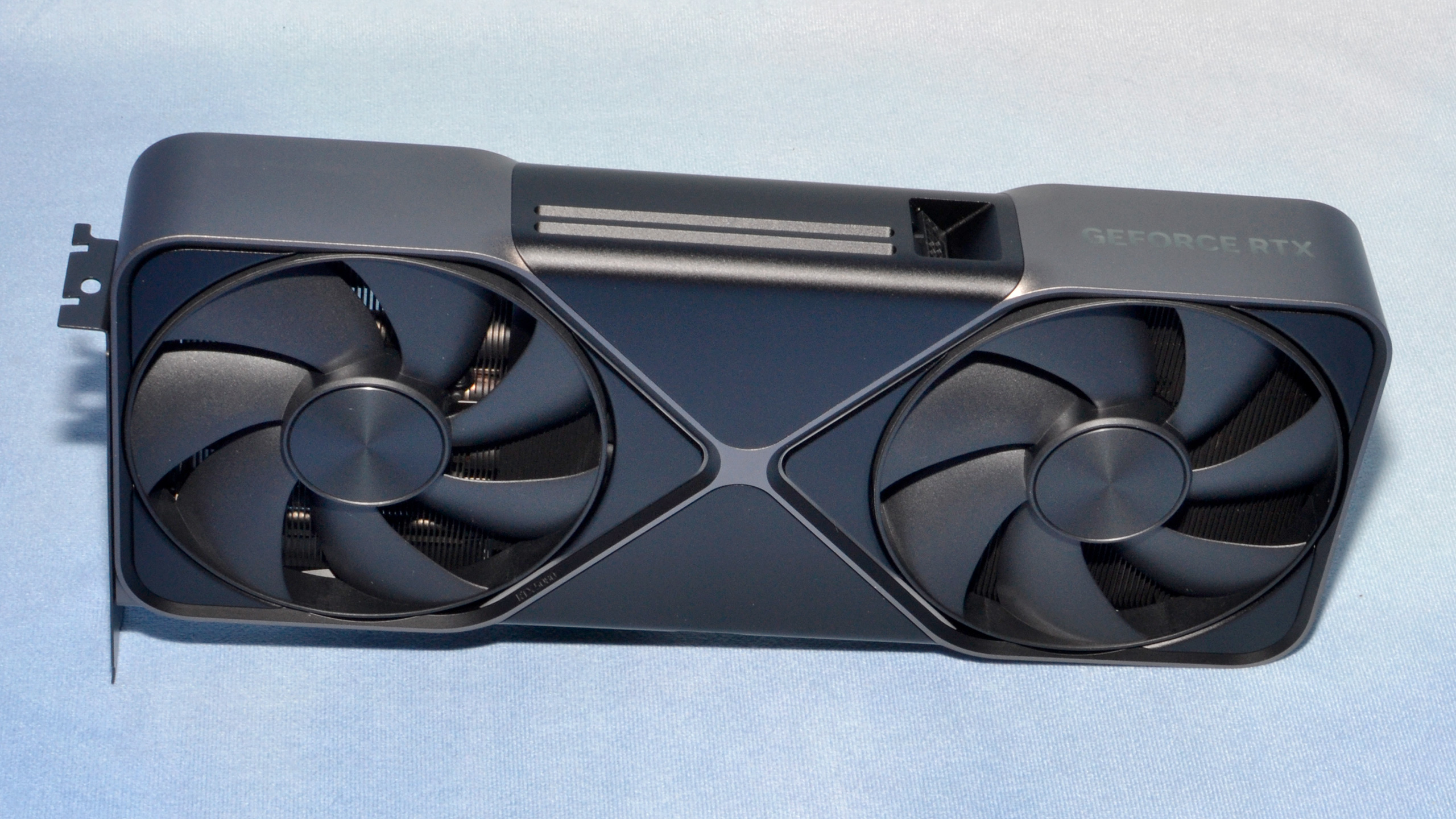
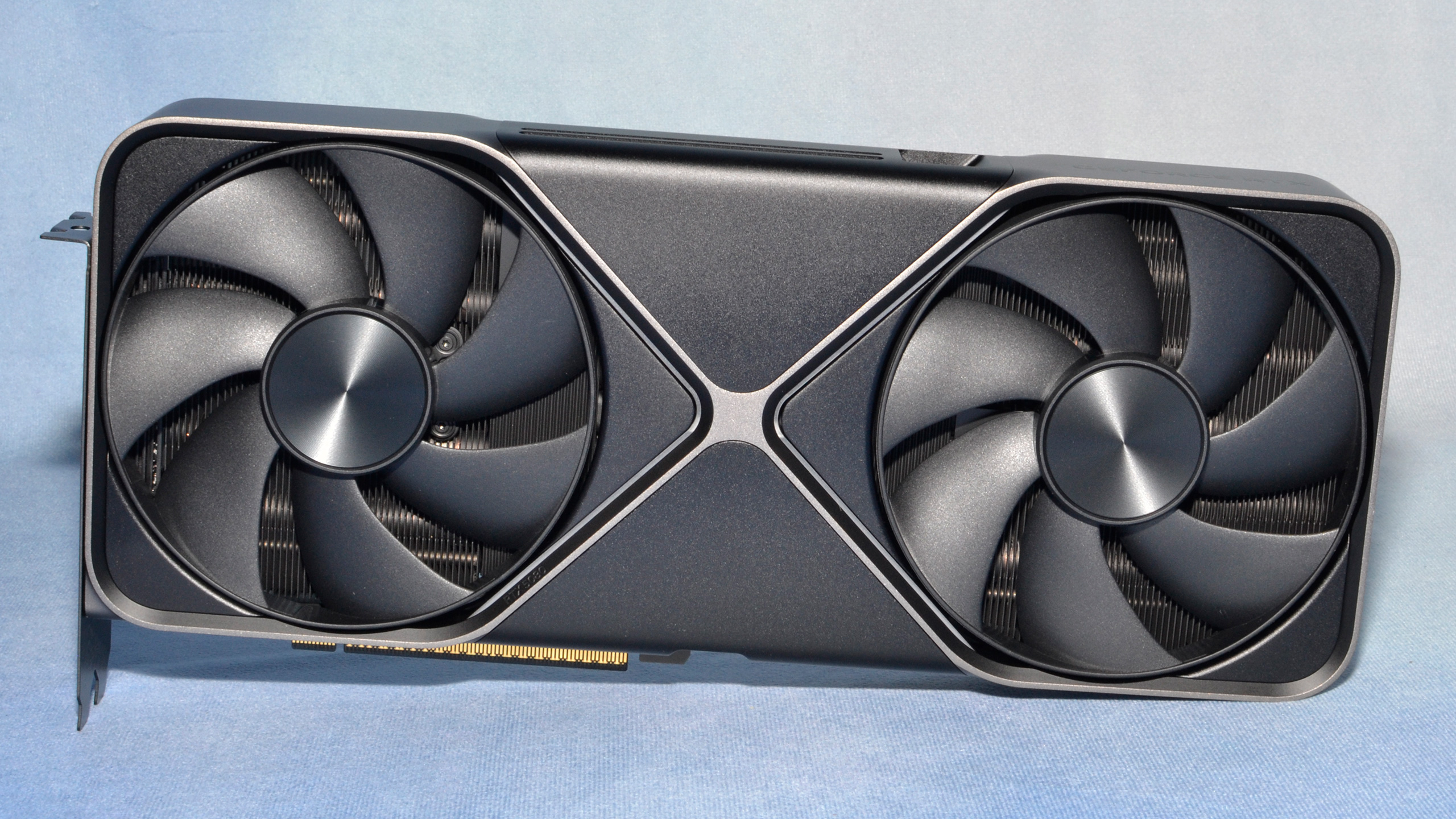
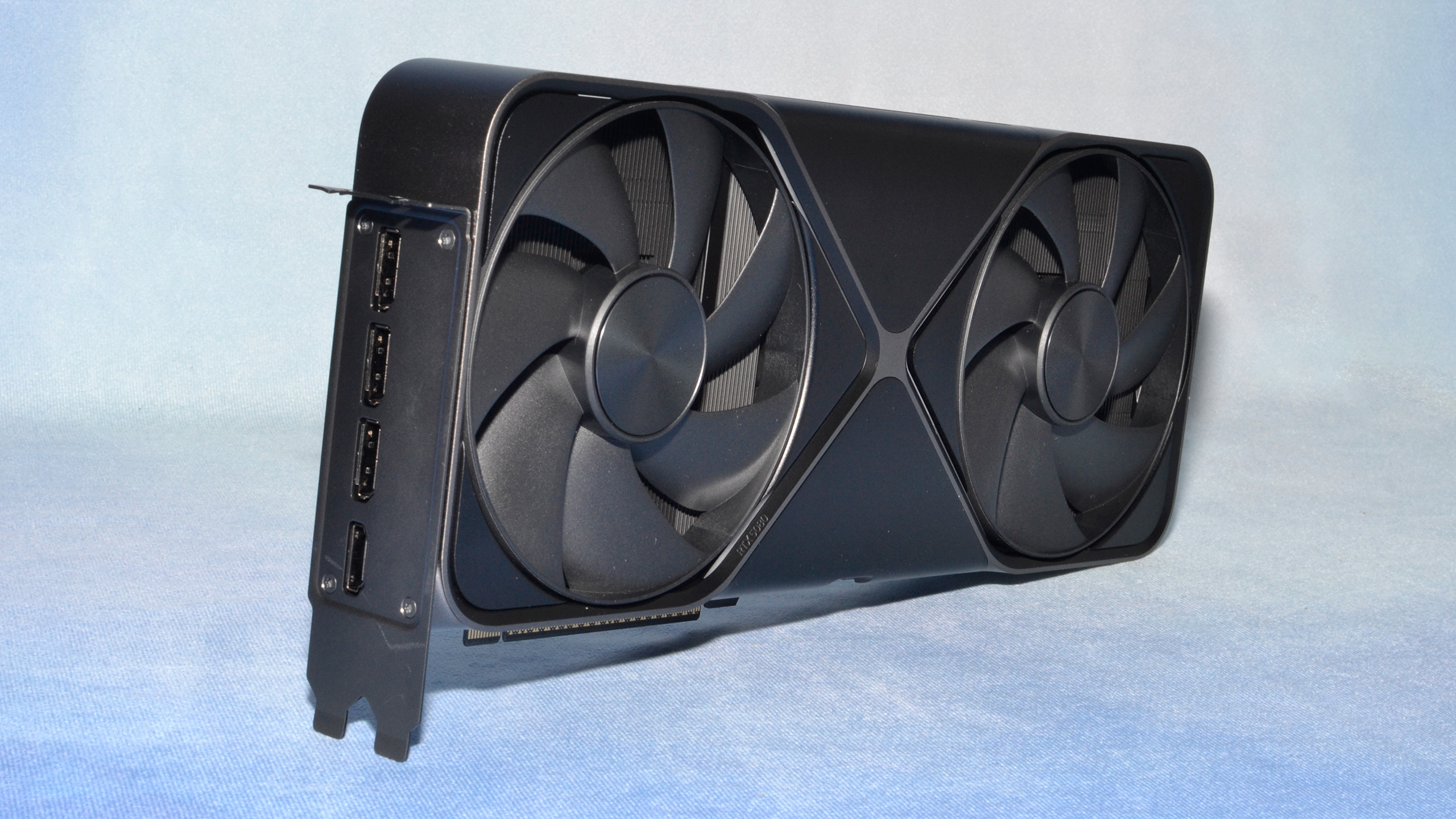
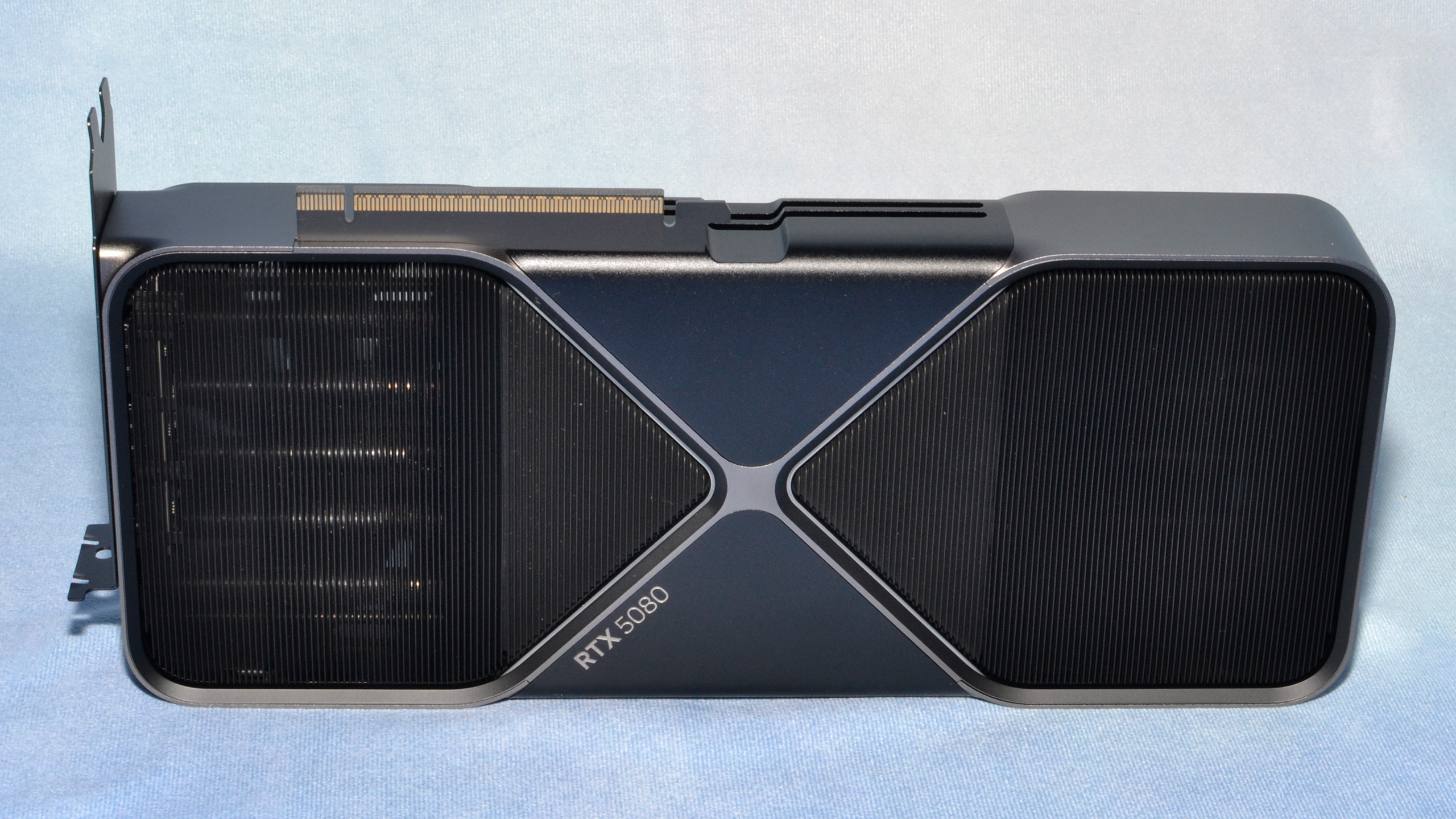
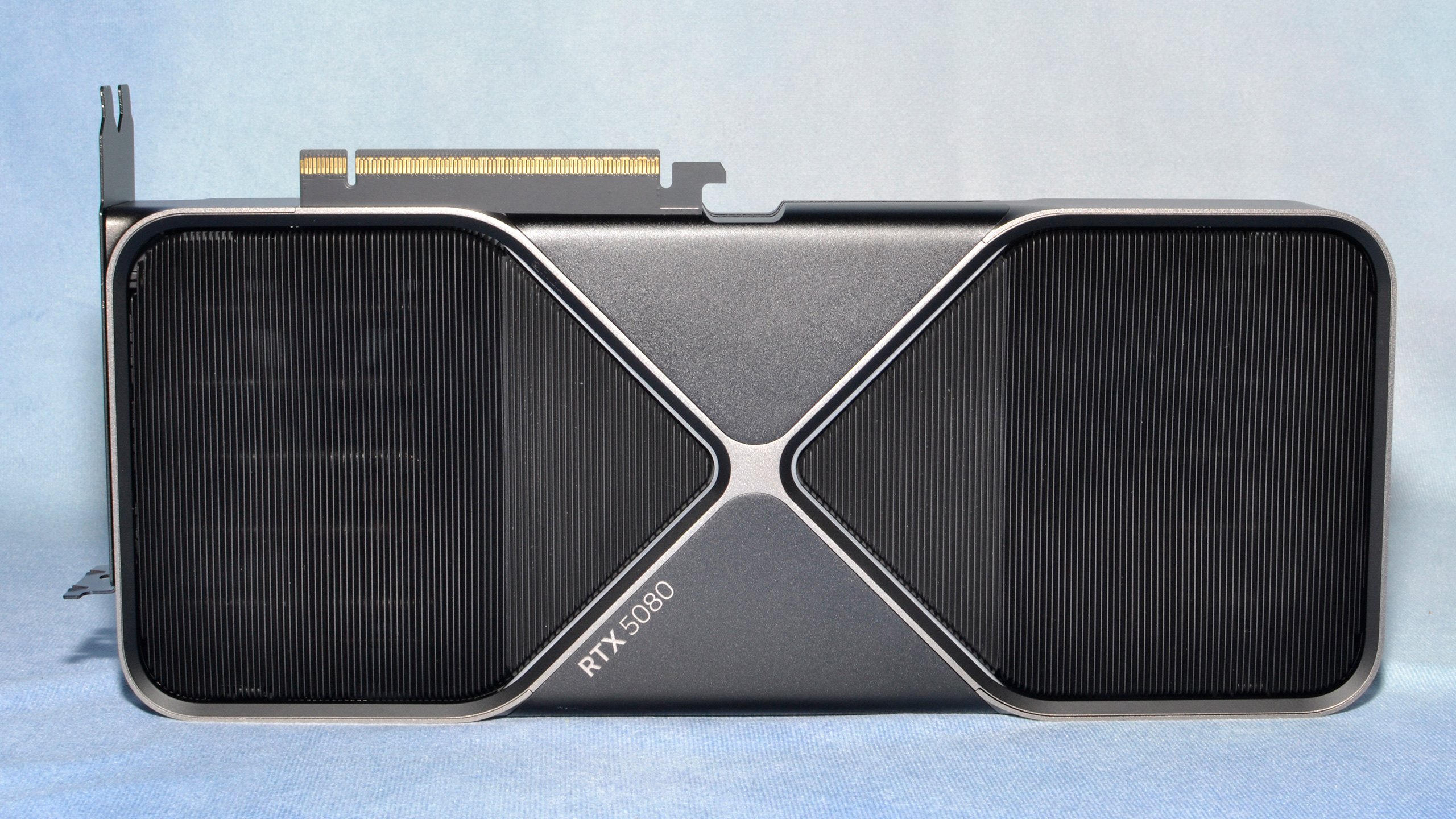
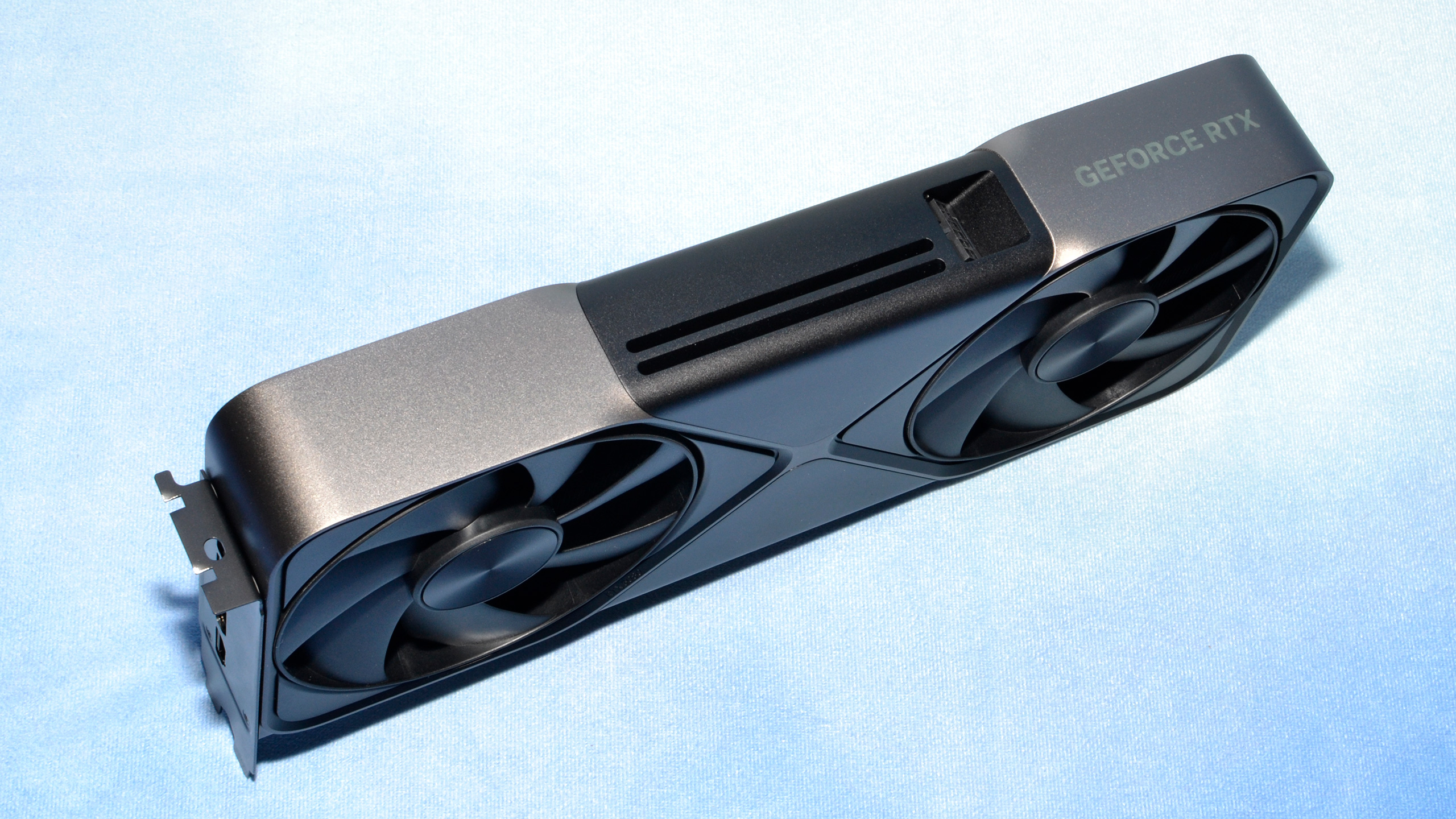
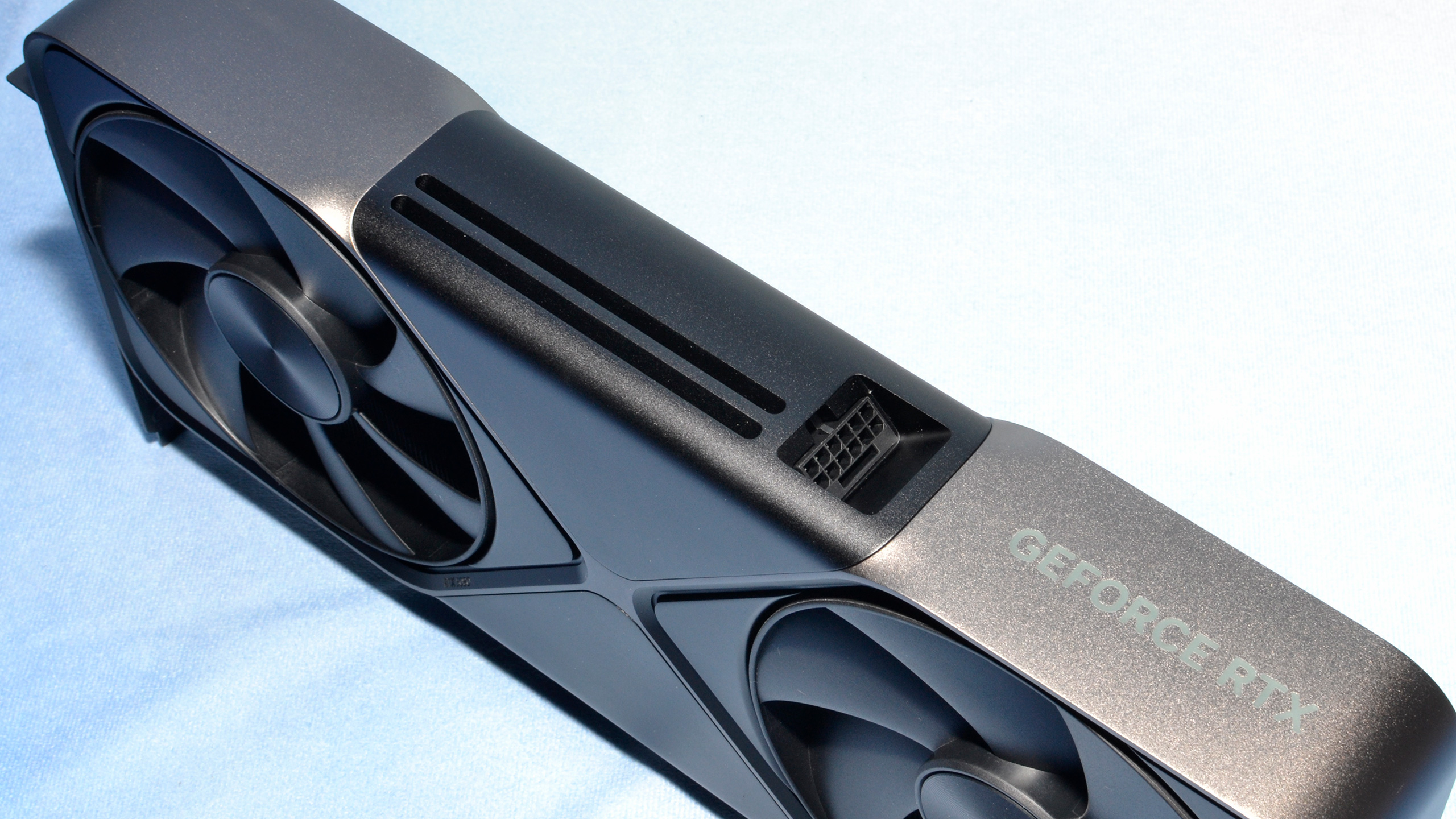
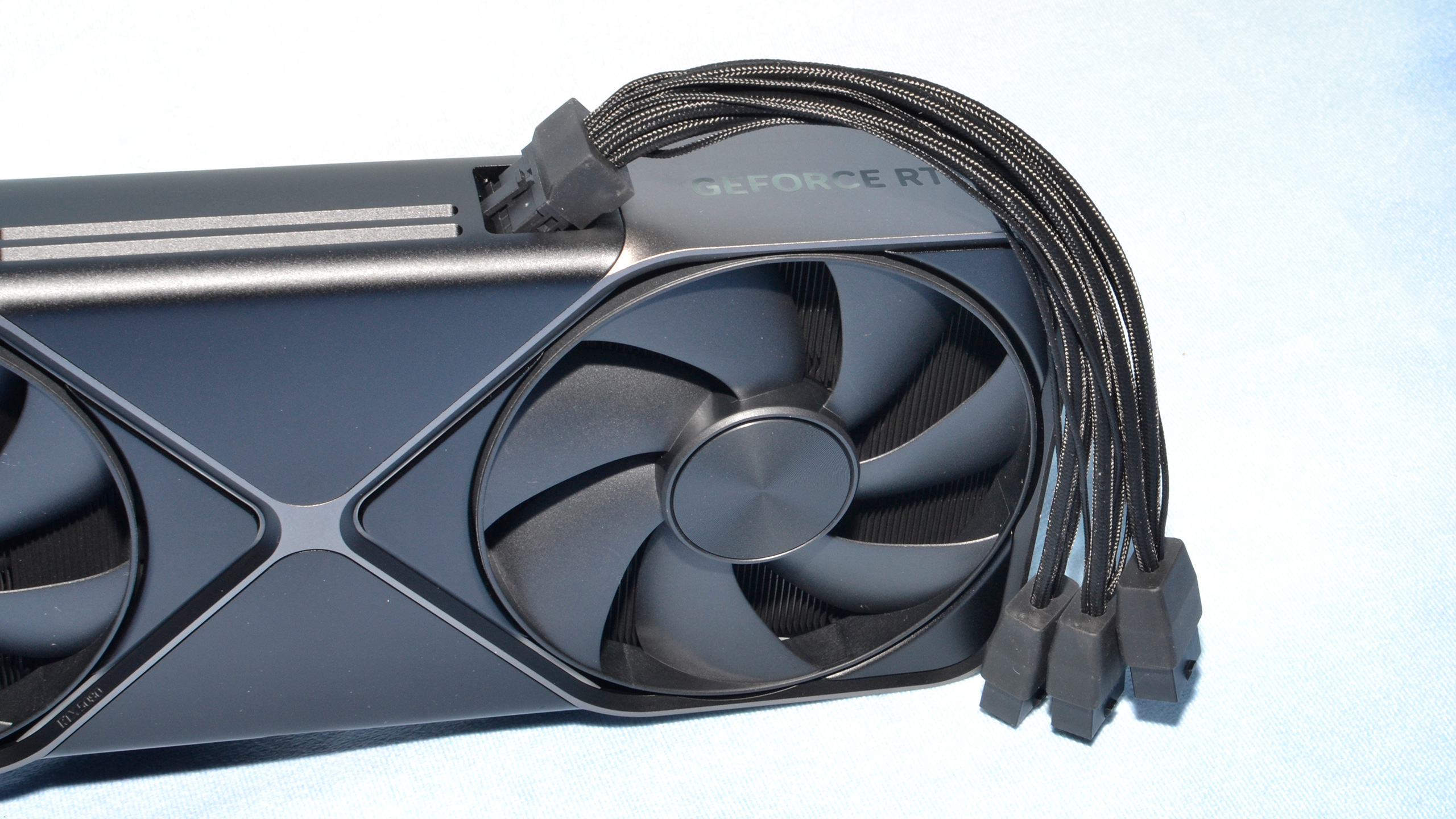
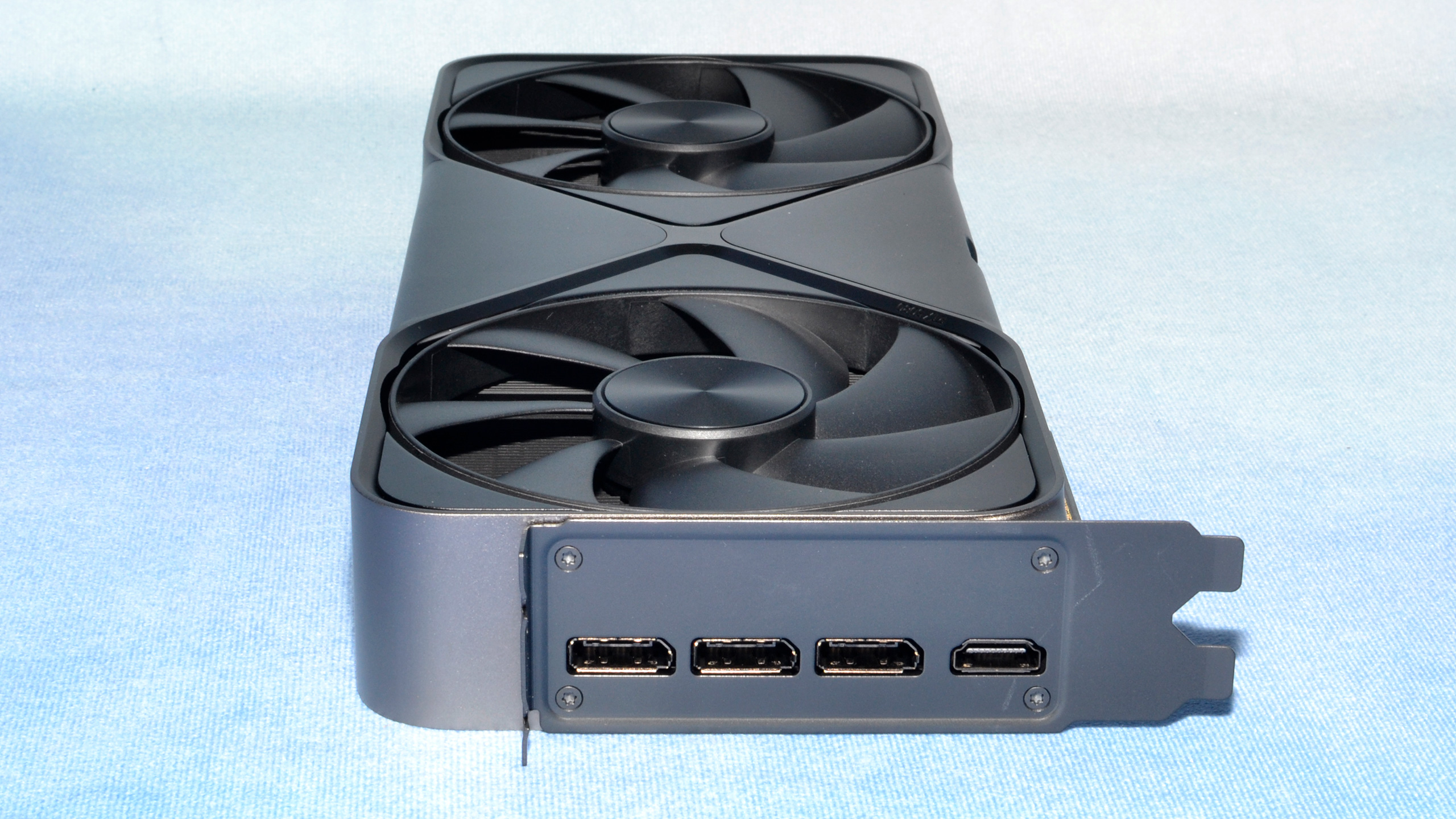
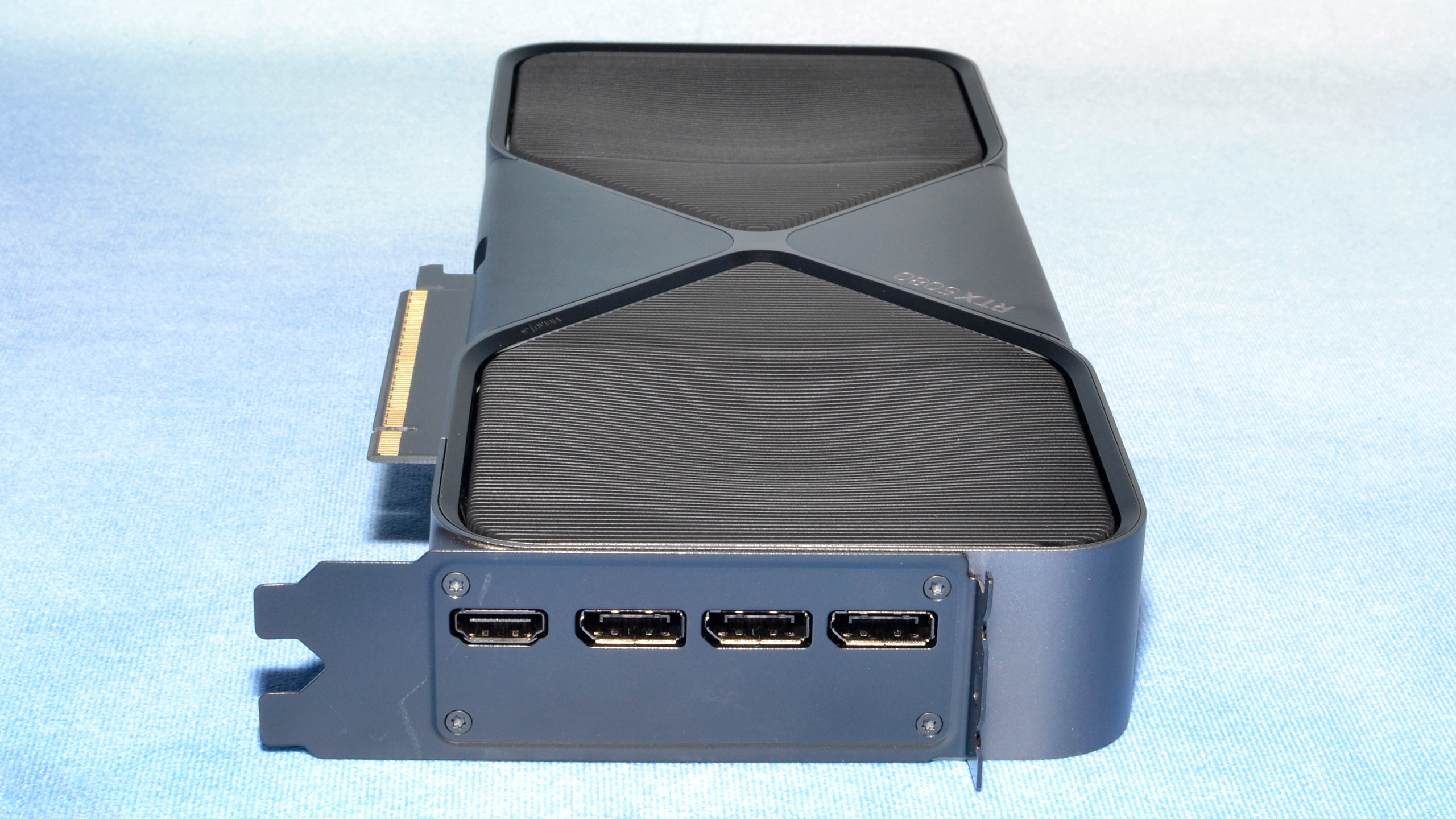
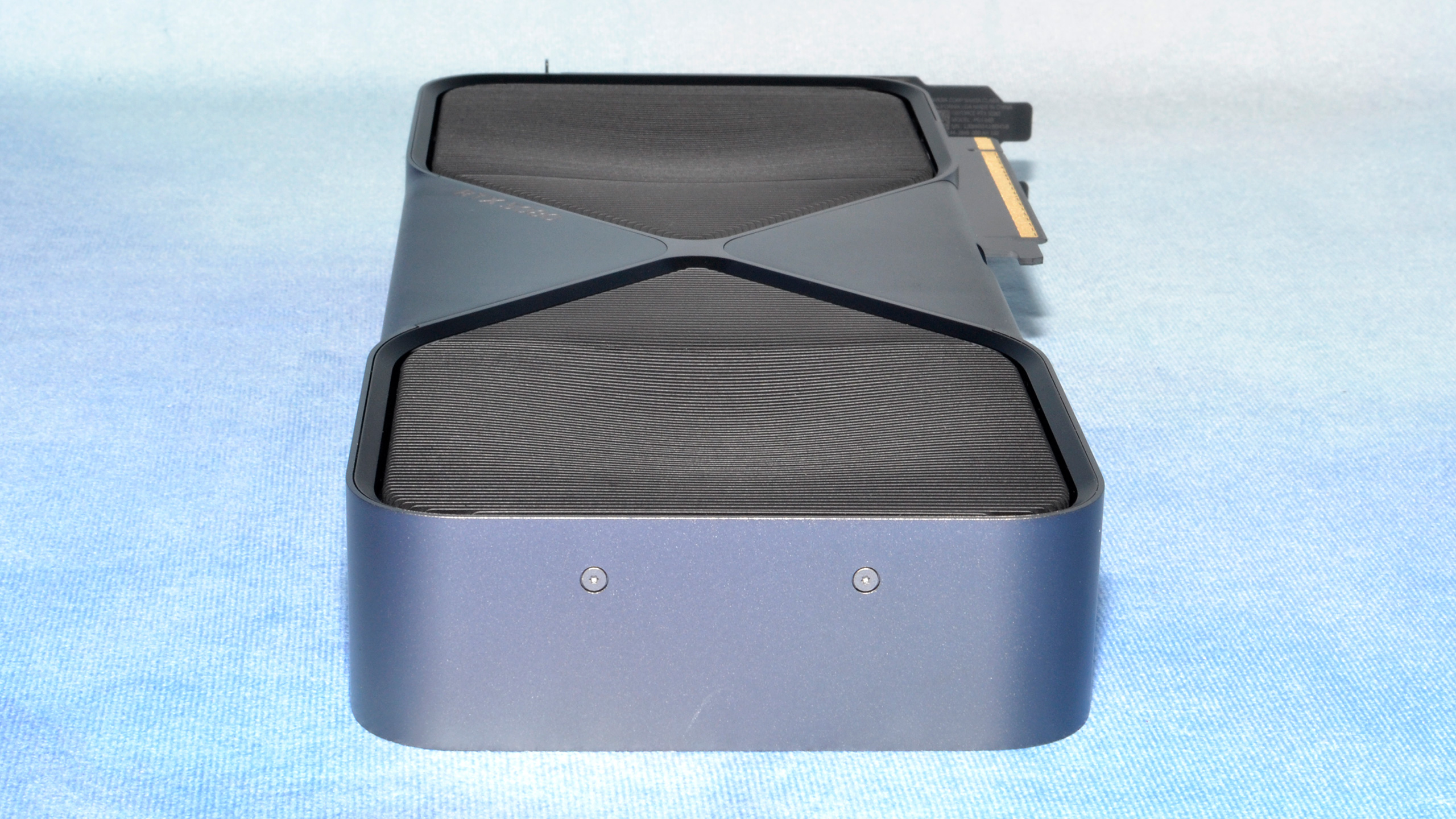
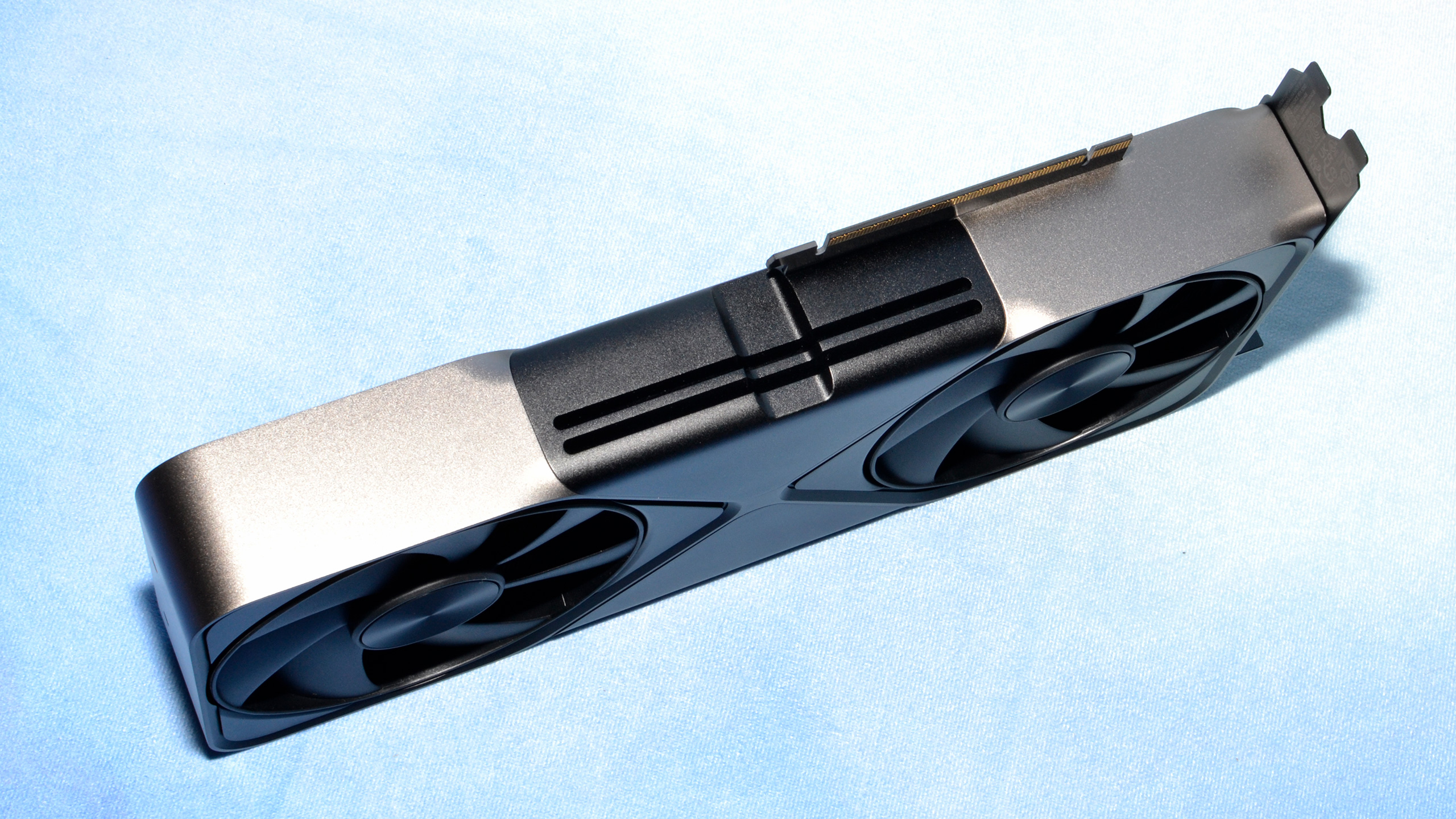
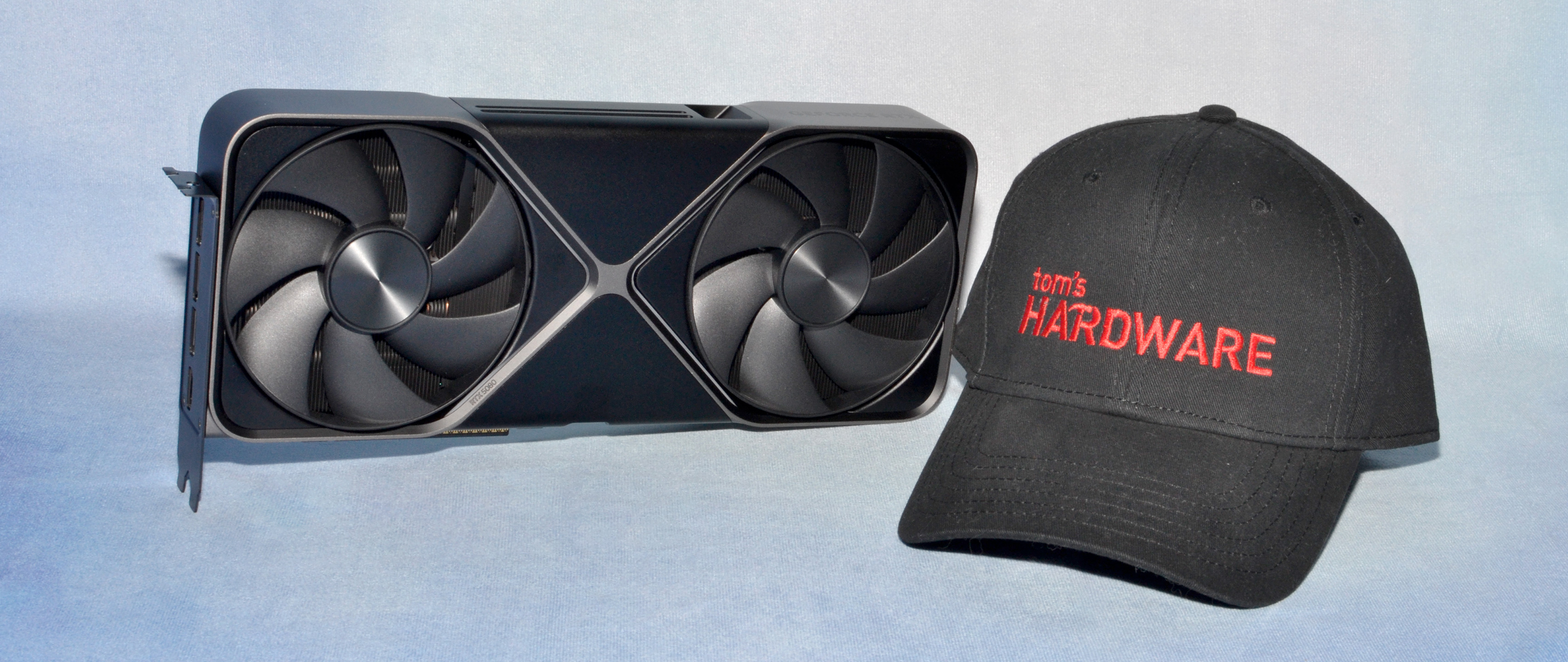
We were surprised with the cooling performance of Nvidia's 5090 Founders Edition, and we suspect the removal of liquid metal thermal interface material (TIM) won't really affect the 5080 Founders Edition much, since it has a much lower TGP (Total Graphics Power) rating. The dual 115mm fans with flow-through radiators should be more than enough to help cool the up to 360W GPU. Ventilation slots on the top and bottom of the card help to direct the exhaust away from the fan intakes to minimize recycling the warmed-up air.
Nvidia has switched to a PCIe 5.0 x16 slot connector with the Blackwell cards announced so far, which you can tell by the "T" markings on the gold fingers. It also offers three DisplayPort 2.1b UHBR20 outputs, which allow up to 4K 480Hz or 8K 165Hz (using DSC — Display Stream Compression). There's also a single HDMI 2.1 output that can do up to 4K 240Hz / 8K 120Hz. Curiously, the DP ports are all reversed (angled notch down rather than up) compared to virtually every GPU we've tested in the past decade.
Like the 5090, Nvidia provides minimalistic RGB lighting on the 5080 FE. The GeForce logo on top of the card lights up, and the "X" shapes also have lighting on both sides of the card. By default, all the lighting is white, but it can be controlled through various software utilities.
- MORE: Best Graphics Cards
- MORE: GPU Benchmarks and Hierarchy
- MORE: All Graphics Content
Get Tom's Hardware's best news and in-depth reviews, straight to your inbox.
Current page: Nvidia GeForce RTX 5080 Founders Edition
Prev Page Introducing the Nvidia GeForce RTX 5080 Next Page Nvidia RTX 5080 Test Setup
Jarred Walton is a senior editor at Tom's Hardware focusing on everything GPU. He has been working as a tech journalist since 2004, writing for AnandTech, Maximum PC, and PC Gamer. From the first S3 Virge '3D decelerators' to today's GPUs, Jarred keeps up with all the latest graphics trends and is the one to ask about game performance.
-
cknobman Pretty darn dissapointing.Reply
Sit back and let the impatient suckers get fleeced.
I'll happily wait for March and see if AMD can offer something worth buying at $500. -
King_V I initially looked at the TDP numbers, and thought: a new architecture, slightly more than 10% extra power draw for slightly less than 10% extra performance, on average, for gaming.Reply
But, that it actually doesn't exceed the power consumption during use of the 4080 Super is nice to see.
Still, yeah, if you're in the market for a GPU with this performance, and if the price is the same, the 5080 is the way to go.
But, I feel like the odds are that, at least for a few months, the 5080 will cost more, and the 4080 Super prices MIGHT come down a little with the release of the 5000 series. If so, that situation could make the 5080 a hard sell. -
spongiemaster Reply
5090 is more than 50% faster than 5080 which is ridiculous. There's something to be said for trying to upsell, but that's way too big a gap in performance and cost between the 5080 and 5090. Also sounds like there are issues with volume production as well. Getting people to move up doesn't work if you don't have product to sell them. If you're in the market for a 5080, wait for the refresh. Will likely have more VRAM and will hopefully gain some meaningful ground in performance.Gururu said:It's so cheap though, $1000 less than the 5090. -
TCA_ChinChin How is "second fastest GPU" a positive? Its not even true, the 4090 is the second fastest GPU. This is the worst 80 series release by Nvidia for a while now. Im pretty sure the last 4-5 generations of 80 series cards have outperformed the previous generation flagship (except the 2080 vs 1080ti which was also a quite disappointing generation).Reply -
Elusive Ruse Thank you @JarredWaltonGPU for the detailed review and pointing out the flaws of this underwhelming product. The 80 class is officially dead? I wish you had the time to include the 3090 as well so we could see how 4080 performed against it and in turn highlight the fact that the 5080 doesn’t even come close to the 4090.Reply
I was in the market for a 5080 but my excitement died down gradually with the leaks about its specs over the past few months and with the reviews out I’m definitely not planning to throw €1200+ at it. -
spongiemaster Reply
5080 is 50% faster than the 3090 at 4k. So a decent upgrade for 3090 users for less money than they spent on their 3090 though there is a memory downgrade. Still would recommend waiting for the refresh.Elusive Ruse said:I wish you had the time to include the 3090 as well so we could see how 4080 performed against it and in turn highlight the fact that the 5080 doesn’t even come close to the 4090. -
I'm getting the impression that the reason behind 5080 being so disappointing, is Nvidia trying to funnel consumers into buying the extremely inflated 5090.Reply